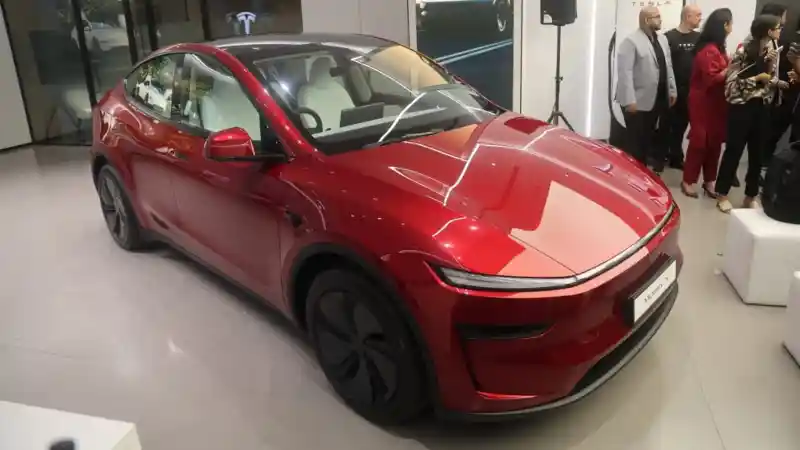Tesla has officially entered the Indian market, inaugurating its first showroom at Maker Maxity Mall in Mumbai’s Bandra Kurla Complex (BKC) on July 15. While the global electric vehicle (EV) giant’s arrival has generated immense buzz, experts caution that Tesla’s journey in the world’s third-largest auto market is set to be a challenging one.
This move comes at a difficult time for Tesla globally. In Q2 2025, domestic sales in the US dropped by 6.3%—marking the third consecutive quarterly decline. In China, deliveries fell nearly 12% during the same period. In Europe, Tesla has experienced a steady five-month decline in sales, partly due to competition from affordable Chinese EVs and political headwinds. Its market share in Europe dropped to 1.2% in May, compared to 1.8% a year ago.

Nearly half of Tesla’s revenue is generated in the US, with another 20% coming from China. The remaining 30% is spread across global markets. As Tesla looks to India for growth, the road ahead presents both opportunities and steep challenges.
Tesla’s Offerings in India
Tesla has introduced the Model Y in India, priced at ₹60 lakh for the rear-wheel drive variant and ₹68 lakh for the long-range version. These models, imported as Completely Built Units (CBUs), attract heavy import duties—making them significantly costlier than local alternatives.
This pricing pits Tesla against luxury EVs like the Mercedes-Benz EQB, BMW iX1, Volvo EC40, and Kia EV6 in India.
Facing Fierce Local Competition
According to Jahol Prajapati, Research Analyst at SAMCO Securities, the Indian EV market is already highly competitive.
“Tesla’s arrival in India has electrified the market, but this won’t be an easy ride. Indian buyers are value-conscious and demand a strong price-to-performance ratio.”
While Tesla’s global appeal is undeniable, Prajapati noted that its offerings lack the affordability and practicality Indian consumers prioritize.
- The Tesla Model Y offers a range of 500 km, but competitors like Mahindra BE 6 (557 km), BYD eMAX7 (530 km), and Tata Harrier EV are priced between ₹19–30 lakh—delivering comparable, or in some cases, superior range at a significantly lower cost.
Key Structural Challenges
A major obstacle for Tesla is its lack of local manufacturing. Without a factory in India, Tesla is unlikely to reduce prices or achieve mass-market penetration.
“India is not a market that buys logos—it’s a market that worships value for money,” Prajapati emphasized.
Additionally, India’s still-developing EV charging infrastructure could impede Tesla’s growth. In contrast, brands like Tata Motors, Mahindra & Mahindra, and BYD India are not just selling EVs but also building supporting ecosystems with robust service networks and deep insights into Indian consumer behavior.
Investor Outlook: Positive for Local Players
Prajapati reassured investors in Indian EV stocks:
“Tesla’s entry will not disrupt the market overnight. Instead, it will push local players to innovate further and strengthen India’s EV ecosystem. This is an opportunity for Indian brands to consolidate their lead.”
He believes India’s EV growth story will be driven by affordability, accessibility, and after-sales support, where Tata and Mahindra have already established strong footholds.
The Road Ahead for Tesla in India
While Tesla’s entry into India marks a significant milestone, its success will depend on its ability to localize production, adjust pricing, and adapt to the unique demands of Indian consumers. For now, its journey in India’s EV market promises to be as challenging as it is exciting.
